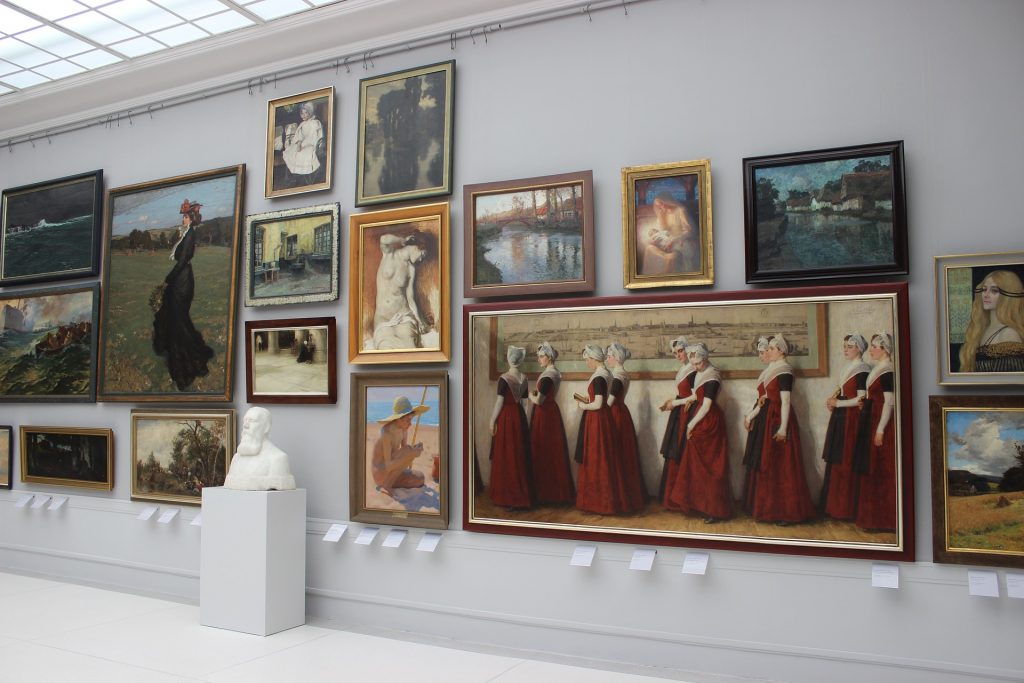<p style="text-align: justify">So you’ve got yourself a gallery show, and you have a bunch of works that are finished and ready to be hung, or at least planned and ready to be produced &#8211; now&#8217;s a good time to make sure you don’t overlook one of the most important aspects of showing artwork – the installation!</p>
<p style="text-align: justify">The way a piece of artwork is installed can drastically affect the way it is viewed &#8211; it can even be part of the piece if the artist has planned it this way. A famous example of conceptual installation is Russian artist Kazimir Malevich’s 1915 painting, Black Square – the painting itself looks like a fairly simple abstract painting, but when it was originally shown, it was hung high on the wall in the corner of the room – a spot that had particular meaning to Russian audiences of the era because that spot was where religious portraits would normally be hung in the house. The installation in the corner elevated Malevich’s work from a simple geometric study to a highly provocative work of conceptual art.</p>
<p style="text-align: justify">Now, you may not be looking to charge your work with the same amount of controversy, but you should still be mindful of where and how you install a piece, knowing that it has the potential to be a factor in whether audiences find your work interesting and innovative, or run-of-the-mill.</p>
<p style="text-align: justify">If it&#8217;s possible for you to help with the installation of your work at a gallery show, or even just to be present, that&#8217;s a great opportunity that shouldn&#8217;t be missed. Think about how the pieces interact to form a complete exhibition, rather than simply hanging each individual piece. Also, think about the type of work you are entering and whether you want to have it displayed in a traditional manner, or if you want to play with that – are you reflecting art historical tradition, or are you subverting it? Talk with the gallery owner or preparators to see if they have any expert input.</p>
<p style="text-align: justify">Remember also to give a detailed description of your installation methods to the preparators of a show that you will be unable to assist with. No detail should be overlooked – down to the weight of the pieces and the model of screw or wire that should be used to affix them to the wall if that is the case.</p>
<p style="text-align: justify">The physical act of hanging an image is pretty easy. Choices regarding where to hold it, however, are something but. In a book or on screens, a painting seems invincibly itself, however once decorated high or low, enclosed by plenty of space or very little, close to works that harmonise or works that clash, clustered by theme or chronologically organized, a painting’s impact can be enhanced or blunted. Even a masterpiece can lose its magic if unfortunate choices are made.</p>
<p style="text-align: justify">In one’s home or a dealer’s gallery, works of art are seen by comparatively few individuals and it&#8217;s easier to manipulate with their display. Not so in museums, repositories of most of the world’s greatest art, visited by millions of people every year. Exhibitions can last for months, even years, so art’s arrangement and Fine art installation is far too important to be left solely to academically-minded curators.</p>
<p style="text-align: justify">Professional architects and designers have demonstrated the contribution they can build to our ability to connect with art; they&#8217;re able to make even seemingly arcane works come to life, imbuing them with a way of surprise and delight. A museum’s job isn&#8217;t to compete with artists, but to set their visions free.</p>

THE IMPORTANCE OF INSTALLATION OF AN ART
